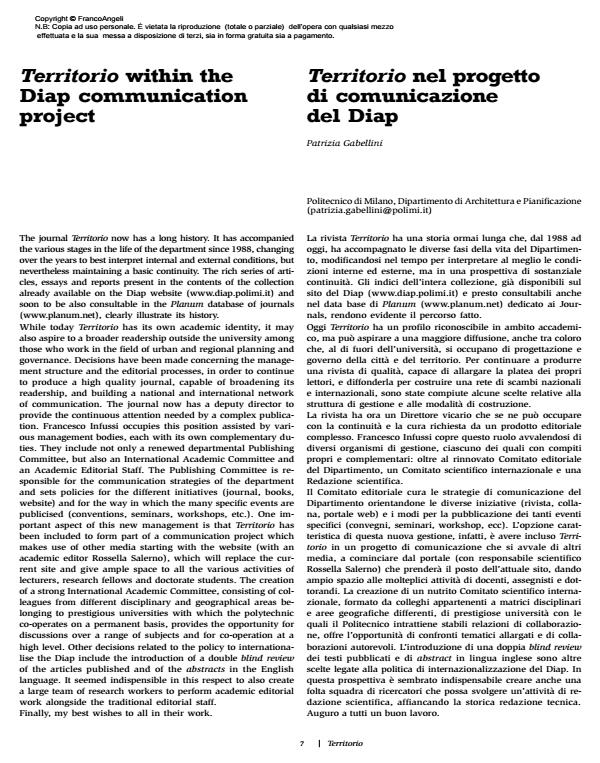Titolo Rivista TERRITORIO
Autori/Curatori Patrizia Gabellini
Anno di pubblicazione 2010 Fascicolo 2010/53
Lingua Italiano/Inglese Numero pagine 1 P. 7-7 Dimensione file 257 KB
DOI 10.3280/TR2010-053001
Il DOI è il codice a barre della proprietà intellettuale: per saperne di più
clicca qui
Qui sotto puoi vedere in anteprima la prima pagina di questo articolo.
Se questo articolo ti interessa, lo puoi acquistare (e scaricare in formato pdf) seguendo le facili indicazioni per acquistare il download credit. Acquista Download Credits per scaricare questo Articolo in formato PDF

FrancoAngeli è membro della Publishers International Linking Association, Inc (PILA)associazione indipendente e non profit per facilitare (attraverso i servizi tecnologici implementati da CrossRef.org) l’accesso degli studiosi ai contenuti digitali nelle pubblicazioni professionali e scientifiche
The journal Territorio now has a long history. It has accompanied the various stages in the life of the department since 1988, changing over the years to best interpret internal and external conditions, but nevertheless maintaining a basic continuity. The rich series of articles, essays and reports present in the contents of the collection already available on the Diap website (www.diap.polimi.it) and soon to be also consultable in the Planum database of journals (www.planum.net), clearly illustrate its history. While today Territorio has its own academic identity, it may also aspire to a broader readership outside the university among those who work in the field of urban and regional planning and governance. Decisions have been made concerning the management structure and the editorial processes, in order to continue to produce a high quality journal, capable of broadening its readership, and building a national and international network of communication. The journal now has a deputy director to provide the continuous attention needed by a complex publication. Francesco Infussi occupies this position assisted by various management bodies, each with its own complementary duties. They include not only a renewed departmental Publishing Committee, but also an International Academic Committee and an Academic Editorial Staff. The Publishing Committee is responsible for the communication strategies of the department and sets policies for the different initiatives (journal, books, website) and for the way in which the many specific events are publicised (conventions, seminars, workshops, etc). One important aspect of this new management is that Territorio has been included to form part of a communication project which makes use of other media starting with the website (with an academic editor Rossella Salerno), which will replace the current site and give ample space to all the various activities of lecturers, research fellows and doctorate students. The creation of a strong International Academic Committee, consisting of colleagues from different disciplinary and geographical areas belonging to prestigious universities with which the polytechnic co-operates on a permanent basis, provides the opportunity for discussions over a range of subjects and for co-operation at a high level. Other decisions related to the policy to internationalise the Diap include the introduction of a double blind review of the articles published and of the abstracts in the English language. It seemed indispensible in this respect to also create a large team of research workers to perform academic editorial work alongside the traditional editorial staff. Finally, my best wishes to all in their work.
Patrizia Gabellini, in "TERRITORIO" 53/2010, pp 7-7, DOI: 10.3280/TR2010-053001